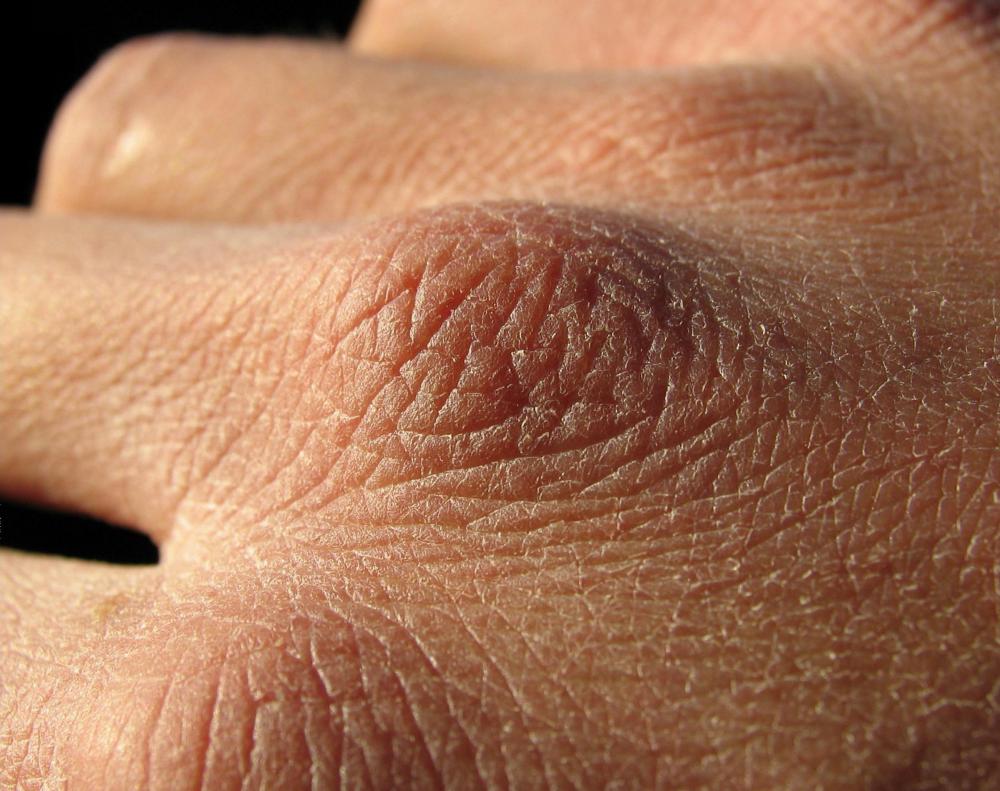At TheHealthBoard, we're committed to delivering accurate, trustworthy information. Our expert-authored content is rigorously fact-checked and sourced from credible authorities. Discover how we uphold the highest standards in providing you with reliable knowledge.
What is a Condyle?
A condyle is a rounded protrusion at the end of a bone which is designed to facilitate articulation with another bone. One of the most famous examples of a condyle is the knuckle; the knuckles of the hands are wide because the finger bones flare out to form condyles to articulate with the neighboring bones. The rounded projection is designed to stabilize and strengthen the joint, while also providing a smooth and even point of articulation.
Another notable condyle is the lateral condyle and its paired projection, the medial condyle, seen on the tibia and the femur. These protrusions account for the distinctive shapes of both bones, and act as points of attachments for muscles and tendons which work together to give the joint a range of movement. Another example is the mandibular condyle, located on the jaw bone and allowing it to articulate with the rest of the skull.

Fractures of the condyle can occur with some types of trauma to the bone. In some cases it may be possible for the bone to recover with casting, but in other instances, surgery is needed to stabilize the joint. For severe fractures, it may be necessary to put in an artificial joint replacement, severing the end of the bone to anchor an artificial joint in place. This is also done when the ends of the joints are badly damaged by arthritis and other degenerative conditions.

Damage to this area of the bone can be identified with medical imaging studies. These studies may be ordered by a doctor if a patient shows signs of damage to the condyles, or if a patient is at risk of damage, as for example in certain types of fractures. The area can also be examined surgically if signs of damage are unclear on an x-ray or similar image and a doctor wants to confirm or rule out damage.

As bones grow, the epiphysis at the end of the bone, which includes the condyle, starts out being formed primarily of cartilage to give the bone room to grow and develop. Over time, the epiphyseal plate, as it is known, ossifies or hardens and turns into an epiphyseal line. This can used to date bones, as the ossification of the bone occurs at a steady and known rate as people develop. Older adults do not need growth plates, because they are no longer growing, and thus ossification in their bones will be complete.
AS FEATURED ON:
AS FEATURED ON:















Discussion Comments
@Saraq90 - I hear you! Doctor-speak can be hard to follow sometimes.
I'm glad to hear your arthritis is just in your knees, but I have a family member with arthritis and let me tell you - be vigilant about your arthritis.
Depending on the type of arthritis, it can affect not only your condyle area but the muscles surrounding your joints. So be watchful of any changes in your pain.
My doctor was always saying that arthritis was always going to occur where my condyles were. I never understood what he was saying! Now I know that it just makes logical sense for arthritis to occur where the condyles are because arthritis occurs where bone movement occurs. I wish he would have just said that!
Luckily it seems the condyle of the knee is the only affected condyle so far.
Post your comments